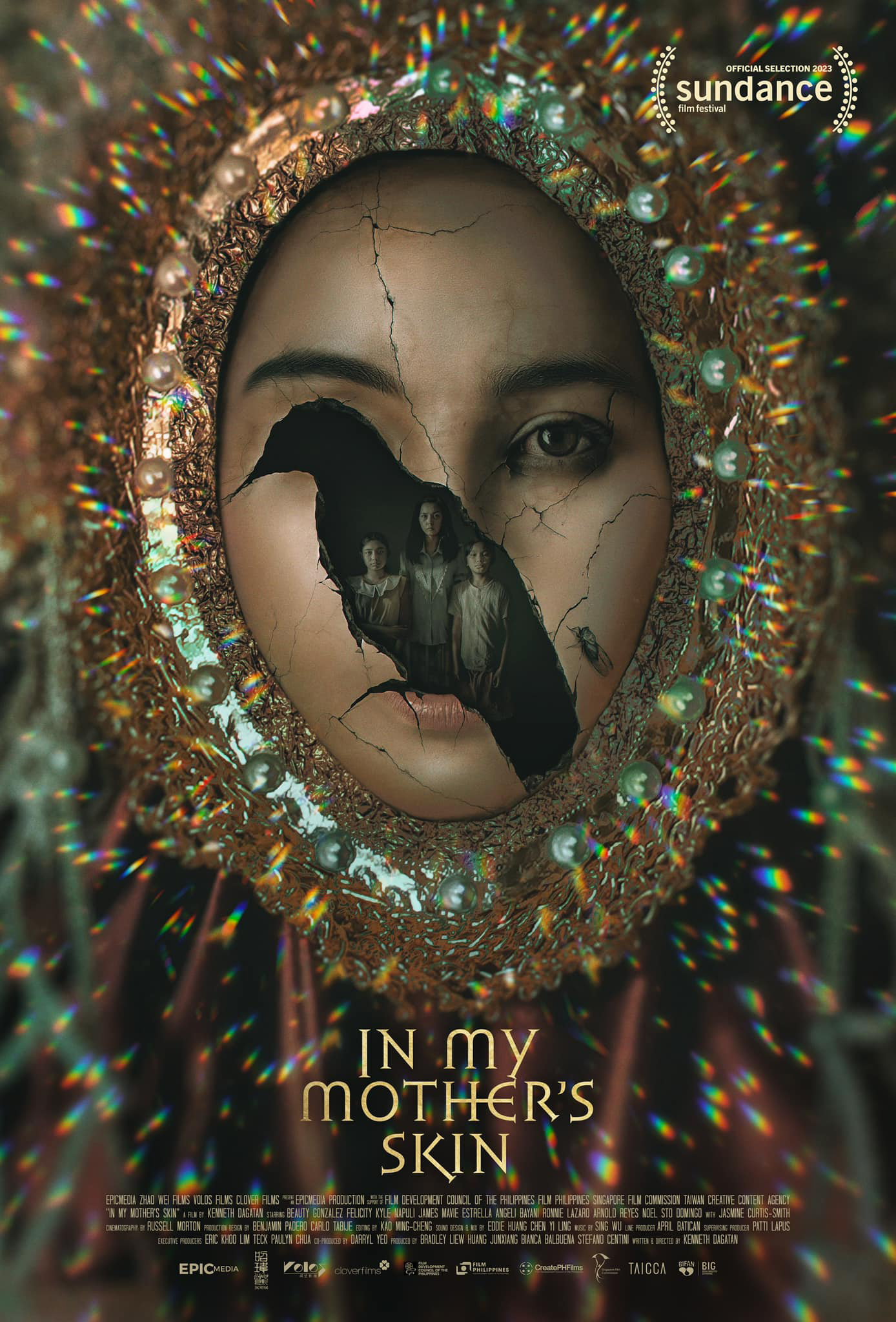The latest from the mind of Kenneth Dagatan is a grim and gory fairy tale that cannot be missed. Spoilers ahead
Fairy tales have existed since time immemorial as a way of spooking children to obedience. “Do not walk alone in the dark,” “Do not trust strangers,” or “Be kind to whoever you encounter”—these stories impart a lesson hidden behind a narrative showing what exactly happens when you do otherwise.
“In My Mother’s Skin” stands as a modern, grim-and-gory fairy tale that will be told for years to come, cautioning gullible children on whom they place their trust.

The film premiered at the Sundance Film Festival in January this year. The latest from writer-director Kenneth Dagatan, the story is set in the Philippines towards the end of World War II. In 1945, a wealthy family is held hostage in their mansion, pressured by the Japanese to surrender the gold they believe the father, Aldo (Arnold Reyes) has stolen. Desperate to keep his family safe, he departs to seek help from the Americans. Interestingly, the film was shot at the José Gaston Mansion, the setting for several scenes from Peque Gallaga’s “Oro, Plata, Mata.”
During his absence, the family is not only threatened by a thinning food supply but also an unknown disease that afflicts the mother, Ligaya (Lifestyle.INQ April cover star, Beauty Gonzalez). Without anyone to turn to, her children Tala (Felicity Kyle Napuli) and Bayani (James Mavie Estrella) search for food to eat and a cure to administer. This desperation leads Tala to a deceitful fairy (Jasmine Curtis-Smith), an entity that is anything but charitable.
With a curse that has seemingly removed Ligaya’s humanity and afflicted her with an insatiable hunger for human flesh, tragedy falls upon the family.
Naivety, desperation, and betrayal
“In My Mother’s Skin” takes advantage of the naivety and trusting nature of children. The Fairy tells Tala upon meeting, “Those of pure innocence are the only ones who can find this place.” While an attractive statement crafted to lower one’s guard, it also foreshadows that this very innocence will be taken advantage of, simply because the innocent don’t know any better.
And before you berate Tala for being so trusting, the adults themselves, albeit in a different context, fall captive to a similar deception. Set towards the end of the Second World War, Filipinos at the time had to take drastic measures in order to survive, including betraying their countrymen—even the Second Philippine Republic led by Jose P. Laurel was considered a puppet government fully controlled by the occupying Japanese.
Throughout the film, the Filipino collaborators in search of the missing Japanese gold present themselves as trustworthy benefactors offering safety and sustenance in exchange for what they need. However, their true colors shine forth as they go back on their word once they get what they want.
But for both Tala and the treacherous Filipinos: how can we fault them? Surrounded on all sides, who else can they turn to? It’s a hopeless no-win situation—it’s a decision based solely on how they want to die.
A cautionary fairy tale on misplaced trust
“In My Mother’s Skin” is a cautionary fairy tale on misplaced trust that is quite similar to “Hansel and Gretel”—two children lost in the woods and a deceitful figure promising prosperity—the resemblance is uncanny. However, instead of a gingerbread house to lure the desperate, the scheming fairy appears as a misleading light at the end of the tunnel.
The importance of light appears as a theme throughout the film. In the beginning, as both Tala and Bayani grow increasingly worried about their father and their worsening situation, Ligaya tells them:
“Hanggang may liwanag tayo dito sa bahay, walang mangyayari sa atin at sa tatay niyo. At sa panahon na labis ang karimlan, natin ibang kailangan kundi isang munting liwanag” [As long as we have light in our home, nothing will happen to us nor to your father. In times of great darkness, all we need is a speck of light].
“At sa panahon na labis ang karimlan, natin ibang kailangan kundi isang munting liwanag.”
This is signified through the flame they light within their home. However, taking advantage of the very hope the children cling to, the Fairy appears as a shining figure clad in a golden attire—she even offers Tala a glowing fruit, promising that consuming it will reverse the misfortune she has placed upon them.
However, it is simply a two-faced facade, and Tala who has had enough of what the Fairy put them through, became untrusting of the mystical figure. And while she has seen through the fairy’s deception, denying to listen any longer, it has come too late and at the cost of her entire family.
Alone in the dark, Tala heads into the unknown, untrusting of any light that comes her way, believing only in the flame from her small lamp and the guidance from her mother in the afterlife. Undeniably bleak, the film ends with this monologue by her:
“Nay? Kung nakikinig ka, gabayan mo ako. Di ko na alam kung sino paniniwalaan, sino mapapagtiwalaan. Nawa’y ikaw ay maging ilaw ko sa napaka habang gabi nito” [Mother? If you are listening, please guide me. I no longer know who I should believe, who I should trust. May you be my light in this very long night].
“Nay? Kung nakikinig ka, gabayan mo ako. Di ko na alam kung sino paniniwalaan, sino mapapagtiwalaan. Nawa’y ikaw ay maging ilaw ko sa napaka habang gabi nito.”